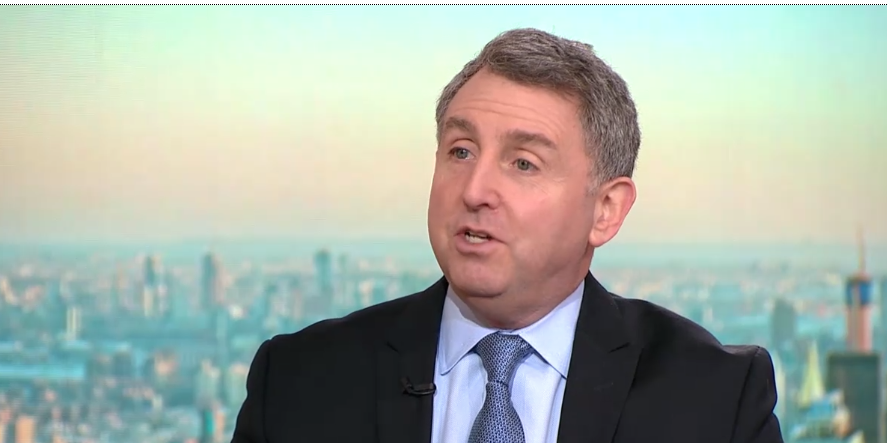Inflation expectations are “collapsing” and markets are pricing sub-2% inflation next year. That’s contrary to what the Fed has suggested, with plans to remain hawkish in the near-term. But they only have “half the story,” and a recession might not be imminent, Jonathan Golub said. Loading Something is loading.
Market expectations for inflation are dropping rapidly, according to Credit Suisse chief stock strategist Jonathan Golub, and the Fed may be at risk at overtightening the economy by only reading “half of the story.”
“Inflation expectations are absolutely collapsing on where inflation is going to be a year or 18 months from now,” Golub said in an interview with Bloomberg on Friday.
He pointed to signals in the US Treasury market, where the one-year breakeven inflation rate, a measure of inflation expectations a year from now, predicted sub-2% inflation in 2023.
That’s likely being driven by falling energy prices in the US. Henry Hub Natural Gas settled at $8.03 per million British Thermal units at 1:00 pm ET on Friday, down 20% from a previous high of $9.68 this summer.
But it’s also sparked worry the Fed will be slow to let up on the brakes, which could push the economy into a recession if inflation continues to fall into early 2023, Golub said. That leads him to think the Fed will blink on its hawkish policy path, despite Powell stating this week that the central bank would continue to hike rates “until the job is done.”
“Why would the Fed unnecessarily drive us into recession, kill several million American jobs if in fact inflation is heading in the right direction?” Golub said.
And although there were two recession indicators flashing in the economy, Golub believed the Fed was “only looking at half the story,” as the indicators aren’t as severe as central bankers may be interpreting.
He pointed that although jobless claims remained high, the large amount of job openings was keeping unemployment relatively stable. And while the yield curve on the 10-year and three-month Treasury notes was on track to invert – a signal that has historically preceded a recession – a downturn usually doesn’t follow until at least 11 months after an inversion.
That may suggest long-term hawkishness isn’t necessary, and the Fed’s insistence on tightening the economy could amount to overkill that leads to a more prolonged period of contraction.
“Yes, we may have a recession, but it may be a year from now, 18 months from now, and being early on calling a recession is being wrong,” Golub said.
Deal icon An icon in the shape of a lightning bolt. Keep reading
More: MI Exclusive Inflation recession prediction Fed rate hikes Chevron icon It indicates an expandable section or menu, or sometimes previous / next navigation options.
